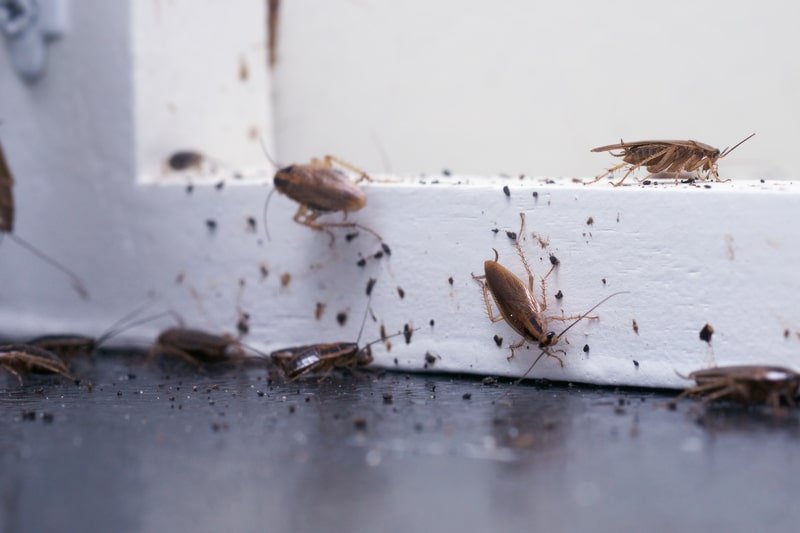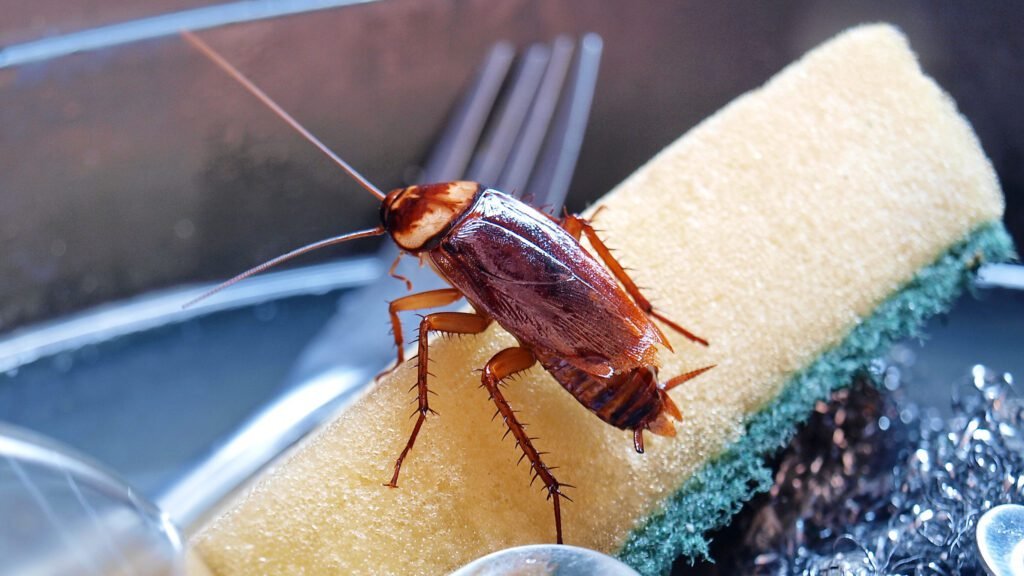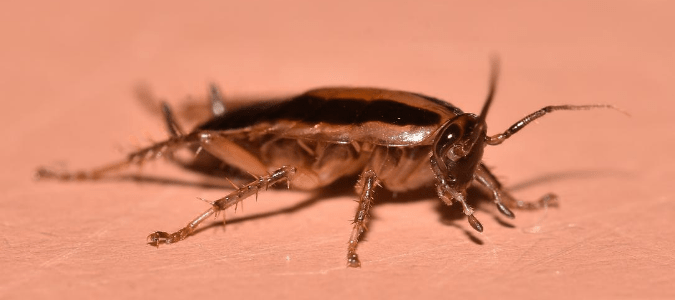In your quest to rid your home of roaches, you may be wondering just how many days it will take to successfully eliminate these pesky insects. With their ability to multiply rapidly and survive in various environments, it can feel like an uphill battle. However, understanding the factors that impact the timeline can help you devise an effective strategy and hopefully achieve a roach-free living space sooner rather than later.
Identifying the Severity of Infestation
Visual spotting of roaches
One of the first steps in eliminating a roach infestation is to identify the severity of the problem. Visual spotting of roaches is a clear indication that you have a roach problem. Roaches are nocturnal creatures, so if you spot them during the day, it could mean that the infestation is quite severe. Take note of any sightings and observe their behavior to determine the type of roach species that you’re dealing with.
Signs of roach nests
Another way to gauge the severity of a roach infestation is by looking for signs of roach nests. Common areas for roach nests include dark and damp places, such as under sinks, in basements, and behind appliances. Look for brown egg casings, shed exoskeletons, and an oily or musty odor, as these are typical signs of roach nests. The presence of multiple nests indicates a larger infestation and a more significant effort needed to eliminate the problem.
Roach droppings
Roach droppings are both a sign of infestation and a way to determine its severity. Roach droppings resemble small pepper flakes or coffee grounds and are typically found in areas where roaches are active, such as along baseboards, in cabinets, and near food sources. The more roach droppings you observe, the larger the infestation is likely to be. Keep track of the amount and location of the droppings to help identify the scope of the problem.
Preparing for Roach Elimination
Clean and declutter the infested area
Before you begin any roach elimination methods, it’s crucial to clean and declutter the infested area. Roaches are attracted to dirt, clutter, and food debris, so removing these attractants is a crucial step in making your home less appealing to them. Vacuum, sweep, and mop the floors, paying special attention to cracks and crevices where roaches can hide. Declutter any areas where roaches could find shelter, such as piles of newspapers, cardboard boxes, or stacks of clothing.
Remove potential food and water sources
Roaches need access to food and water to survive, so removing these sources is essential for effective elimination. Seal food in airtight containers, clean up spills and crumbs promptly, and avoid leaving pet food out overnight. Fix any leaky pipes, faucets, or appliances to eliminate sources of standing water. By denying roaches access to food and water, you make it harder for them to survive and reproduce.
Seal off entry points
To prevent a reinfestation, it’s essential to identify and seal off any entry points through which roaches may have entered your home. Carefully inspect the exterior of your house, including doors, windows, and vents, and seal any gaps, cracks, or openings with caulk or weatherstripping. Pay attention to areas around pipes, utility lines, and where cables enter your home. Eliminating potential entry points makes it more challenging for roaches to return and helps maintain a roach-free environment.
Using DIY Methods to Get Rid of Roaches
Boric acid traps
Boric acid is a popular DIY solution for roach elimination. It is highly effective at killing roaches and disrupting their reproductive cycle. To create a boric acid trap, mix boric acid with powdered sugar and place it in areas where roaches are active. The sugar acts as bait, attracting the roaches to the trap. Once the roaches consume the boric acid, they will die. However, it’s important to use caution when handling boric acid as it can be toxic to humans and pets if ingested in large quantities.
Homemade roach repellents
There are several natural ingredients that can act as effective roach repellents. Peppermint oil, for example, is known to repel roaches due to its strong scent. Mix a few drops of peppermint oil with water and spray it in areas where roaches are commonly found. Other natural repellents include vinegar, lemon juice, and bay leaves. While these homemade repellents may not be as potent as chemical insecticides, they can still help deter roaches and reduce their presence in your home.
Caulking and sealing cracks
One of the easiest and most effective DIY methods to prevent roaches from entering your home is to caulk and seal cracks and crevices. Roaches can squeeze through even the tiniest openings, so it’s essential to inspect your home thoroughly and seal any gaps or cracks. Use a high-quality caulk to seal gaps along baseboards, windows, doorframes, and pipes. Pay attention to areas with moisture, as roaches are attracted to damp environments. By sealing off their entry points, you can significantly reduce the chances of a roach infestation.
Using Chemical Roach Control Products
Sprays and insecticides
Chemical sprays and insecticides are a common option for roach control. These products contain pesticides that kill roaches on contact or provide residual protection. They often come in aerosol form, allowing you to target specific areas where roaches are active. When using sprays and insecticides, follow the instructions carefully and take necessary precautions to protect yourself, your pets, and the environment. It’s important to note that while these products can be effective in killing roaches, they may not address the root cause of the infestation.
Roach baits and gels
Roach baits and gels are designed to attract roaches and provide a slow-acting poison. The idea behind these products is that roaches will consume the bait or gel and then return to their nest, where they will transfer the poison to other roaches, eventually eliminating the entire colony. This method is particularly effective for larger infestations. Place the bait or gel in areas where roaches are commonly seen or near their nest sites. It’s important to be patient with this method as it can take several days or weeks to see the full effect.
Roach foggers and bombs
Roach foggers, also known as bug bombs, are aerosol cans that release a mist of insecticides into the air to eliminate roaches. They are designed to treat entire rooms or areas at once. When setting off a roach fogger, it’s important to follow the instructions carefully and vacate the area. The fogger will penetrate cracks and crevices, reaching roaches hiding in hard-to-reach places. However, foggers may not be suitable for all situations, such as small enclosed spaces or areas with delicate items. Use caution and consider consulting a professional exterminator before using roach foggers.


Calling Professional Exterminators
Benefits of professional help
While DIY methods can be effective for small infestations, larger or more persistent infestations may require the expertise of a professional exterminator. Professional exterminators have the knowledge, experience, and access to specialized products and treatments that may not be available to the general public. They can quickly assess the severity of the infestation and develop a targeted treatment plan to eliminate the roaches from your home. Additionally, professional exterminators can provide guidance on preventive measures to keep roaches from returning.
Exterminator’s treatment plan
When you call a professional exterminator, they will typically begin with a thorough inspection of your property to assess the extent of the infestation. Based on their findings, they will develop a customized treatment plan that may involve a combination of methods, including insecticides, baits, traps, and structural repairs. The treatment plan will take into account the size of the infestation, the species of roaches present, and any specific challenges or considerations unique to your home. The exterminator will explain the plan to you and address any questions or concerns you may have.
Follow-up visits
Eliminating a roach infestation often requires multiple treatments and follow-up visits from the exterminator. Depending on the severity of the infestation, the treatments may need to be repeated every few weeks or months to ensure complete eradication. During follow-up visits, the exterminator will assess the effectiveness of the treatments, reapply any necessary products, and make any necessary adjustments to the treatment plan. It’s important to follow the exterminator’s instructions and schedule all recommended follow-up visits to maximize the success of the treatment and prevent future infestations.
Monitoring and Maintaining a Roach-Free Environment
Regular inspections
Even after successfully eliminating a roach infestation, it’s essential to continue monitoring your home for signs of a recurrence. Conduct regular inspections in areas that are prone to roach activity, such as kitchens, bathrooms, and basements. Keep an eye out for droppings, dead roaches, or any other signs of roach presence. By catching a reinfestation early, you can take prompt action to prevent it from becoming a larger problem.
Preventive measures
To maintain a roach-free environment, it’s important to implement preventive measures. Regularly clean and declutter your home to reduce hiding places and food sources for roaches. Seal off any entry points and repair any cracks or leaks. Consider using roach traps or repellents as a proactive measure. Properly store food in airtight containers and quickly clean up spills and crumbs. By taking preventive measures, you can make your home less hospitable to roaches and minimize the risk of future infestations.
Cleaning habits
Maintaining good cleaning habits plays a crucial role in preventing roach infestations. Roaches are attracted to dirt, grease, and food debris, so keeping your home clean is essential. Vacuum, sweep, and mop regularly, paying attention to hard-to-reach areas. Wipe down kitchen countertops, appliances, and cabinets to remove any food residues. Don’t forget to clean and sanitize pet feeding areas as well. By maintaining a clean and hygienic environment, you can significantly reduce the chances of a roach infestation.


Factors Affecting Roach Elimination Time
Size of the infestation
The size of the roach infestation is a significant factor in determining how long it will take to eliminate the problem. Smaller infestations can often be resolved within a matter of weeks using DIY methods or professional treatments. However, larger infestations involving multiple nests and a larger number of roaches may take several months to completely eradicate. It’s important to be patient and persistent when dealing with a severe infestation and to follow the recommended treatment plan closely.
Roach species
Different species of roaches may require different treatment approaches, and this can affect the elimination time. Some roach species are more resilient and adaptive than others, making them more challenging to eradicate. For example, German cockroaches are known for their fast breeding cycle and resistance to certain insecticides. It’s important to correctly identify the species you’re dealing with to ensure that the chosen treatment method is effective. An exterminator can help identify the roach species and develop an appropriate treatment plan.
Effectiveness of chosen method
The effectiveness of the chosen roach elimination method is a crucial factor in determining the time it takes to get rid of roaches. DIY methods and over-the-counter products may be effective for minor infestations, but they may not address the root cause of the problem or eliminate the entire colony. In such cases, professional help may be necessary to provide more targeted and comprehensive treatments. It’s important to choose a method that has a proven track record of success and to follow the instructions carefully to ensure optimal results.
Understanding the Roach Life Cycle
Egg stage
The roach life cycle begins with the egg stage. Female roaches lay eggs in a protective casing called an ootheca. The number of eggs laid and the time it takes for them to hatch depends on the roach species. For example, German cockroach eggs typically hatch within a month, whereas American cockroach eggs can take up to 80 days to hatch. During this stage, it’s crucial to eliminate the eggs or prevent them from hatching to prevent a new generation of roaches.
Nymph stage
After hatching from the eggs, roaches enter the nymph stage. Nymphs are smaller versions of adult roaches and go through a series of molts as they grow and develop. During this stage, roaches are highly vulnerable and have a high need for food and water. Nymphs resemble adult roaches but lack wings. Depending on the roach species, this stage can last from a few weeks to several months.
Adult stage
Once roaches have completed their nymph stage, they reach adulthood. Adult roaches are fully developed and capable of reproducing. They have wings and can fly, although not all roach species fly. Adult roaches are resilient and can survive in a wide range of environments. They reproduce rapidly, and a single pair of roaches can produce thousands of offspring in a year. Effective elimination of adult roaches is crucial to prevent future infestations.


Common Myths About Roach Elimination
Ultrasonic repellents
One common myth about roach elimination is that ultrasonic repellents are highly effective in driving away roaches. Ultrasonic repellents claim to emit ultrasonic frequencies that are unpleasant to roaches and drive them away. However, scientific evidence does not support the effectiveness of ultrasonic repellents in eliminating roaches or preventing infestations. While they may have some deterrent effect, they are unlikely to provide a comprehensive solution to an infestation.
Citrus peels as deterrents
Another myth suggests that citrus peels, such as lemon or orange peels, can act as natural roach deterrents. The belief is that the strong scent of citrus repels roaches and keeps them away. While citrus peels may have a temporary repelling effect, they are not a reliable or long-term solution for roach elimination. To effectively eliminate roaches, it’s important to use proven methods and treatments targeting the root cause of the infestation.
Extermination once and for all
Some people believe that a single extermination treatment will eliminate roaches once and for all. However, this is often not the case. Roach infestations can be persistent and challenging to completely eradicate in one treatment. Roaches reproduce rapidly, and the eggs, nymphs, or hidden nests may survive initial treatments. Regular inspections, follow-up treatments, and preventive measures are essential to ensure long-term success in keeping roach populations in check.
Preventing Roach Infestations in the Future
Maintain cleanliness
The key to preventing roach infestations is to maintain cleanliness in your home. Regularly clean and declutter your living spaces, paying attention to areas where roaches are likely to hide, such as kitchens, bathrooms, and basements. Vacuum, sweep, and mop floors regularly and wipe down surfaces to remove food residues. Empty trash cans regularly and store garbage in sealed bins. By eliminating food sources and creating a clean environment, you make your home less inviting to roaches.
Eliminate food and water sources
Roaches need access to food and water to survive, so eliminating these sources is crucial in preventing infestations. Store food in airtight containers and clean up spills, crumbs, and food residues promptly. Avoid leaving dirty dishes in the sink overnight and regularly clean pet feeding areas. Fix any leaky pipes, faucets, or appliances to eliminate standing water. By denying roaches access to food and water, you make it difficult for them to survive and reproduce.
Regularly inspect potential entry points
Roaches can enter your home through even the smallest cracks and openings. Regularly inspect potential entry points, such as doors, windows, vents, and utility lines, and seal any gaps or openings with caulk or weatherstripping. Pay attention to areas with moisture or dampness, as roaches are attracted to these environments. By sealing off potential entry points, you create a barrier that prevents roaches from infiltrating your home. Regular inspections and maintenance are essential to identify and address any new or developing entry points
Your Expert in Animal Control and Extermination. Trust our experience for humane, effective pest management, protecting your property and ensuring peace of mind with Michael S.





